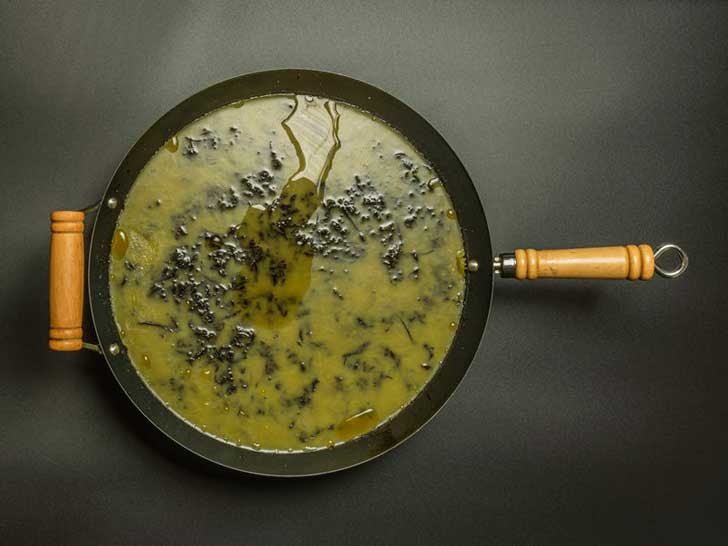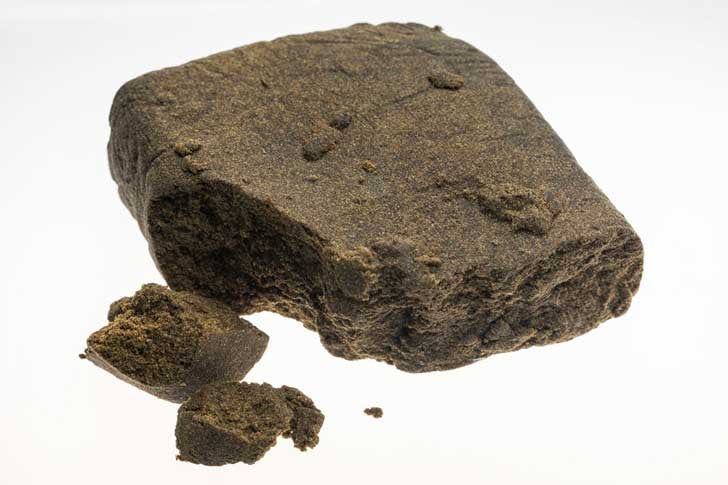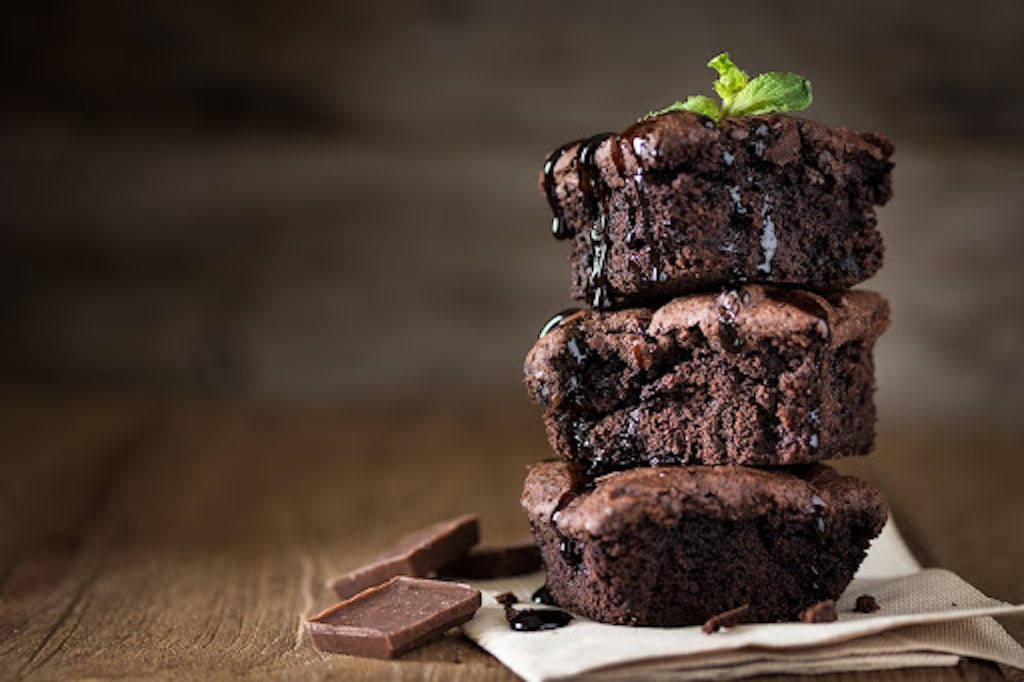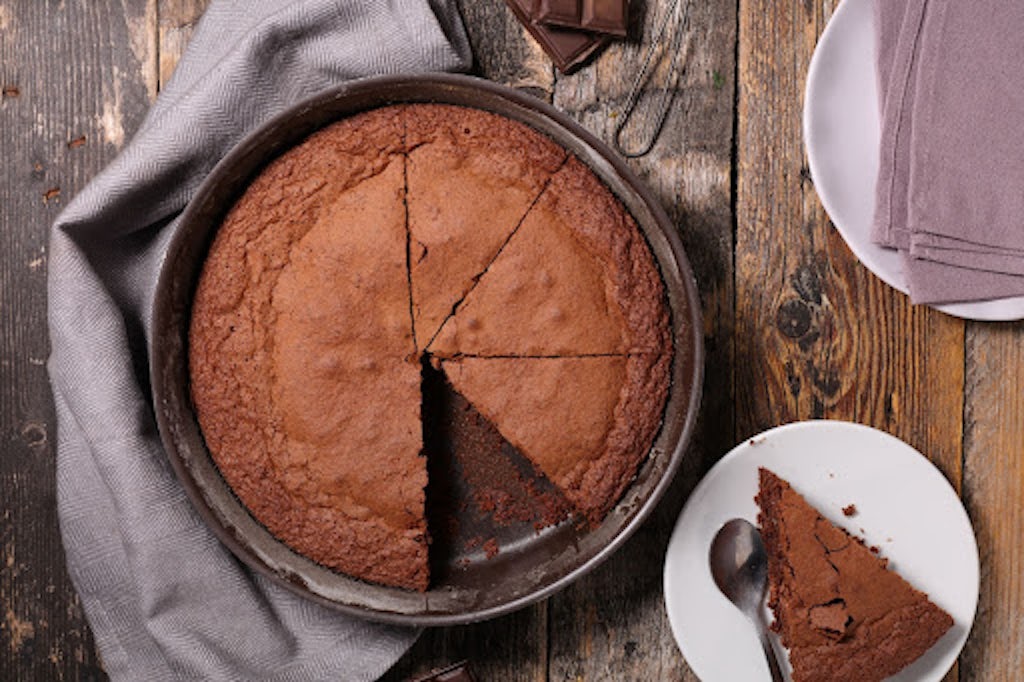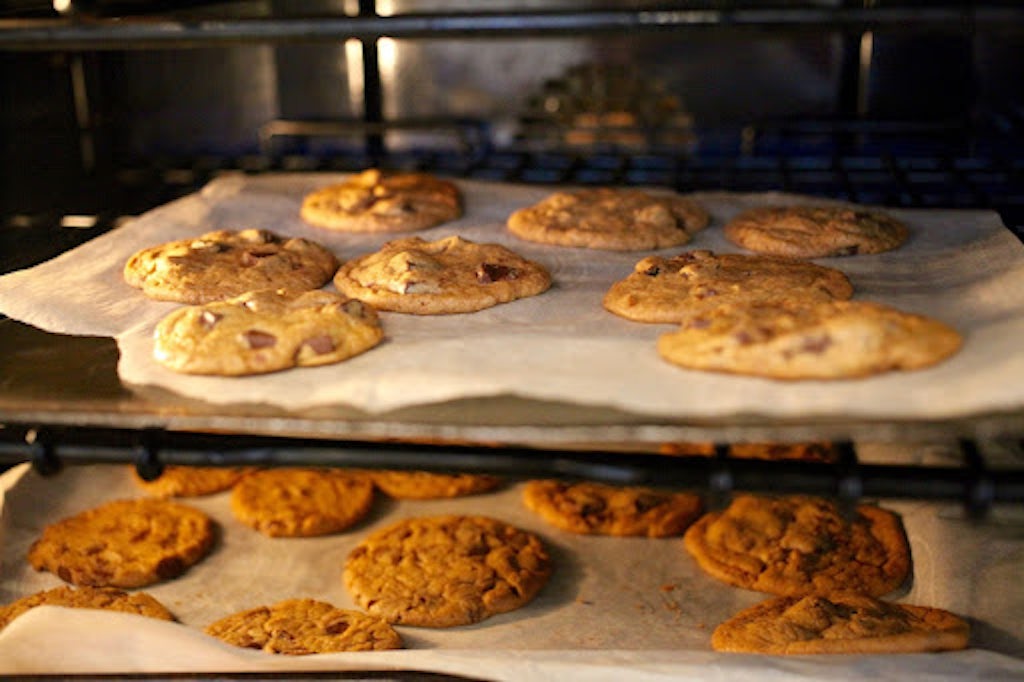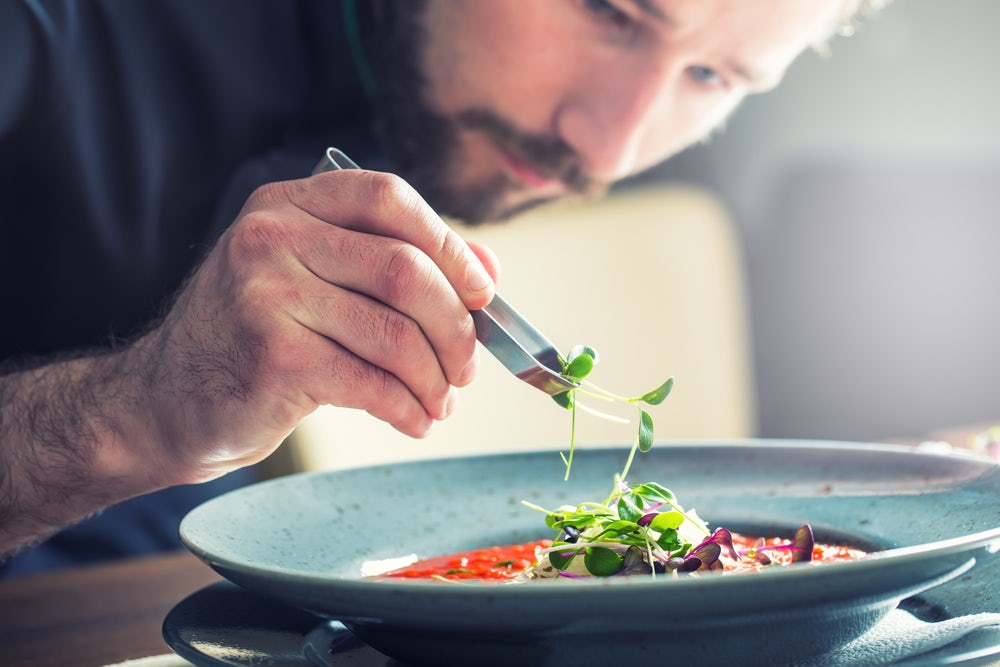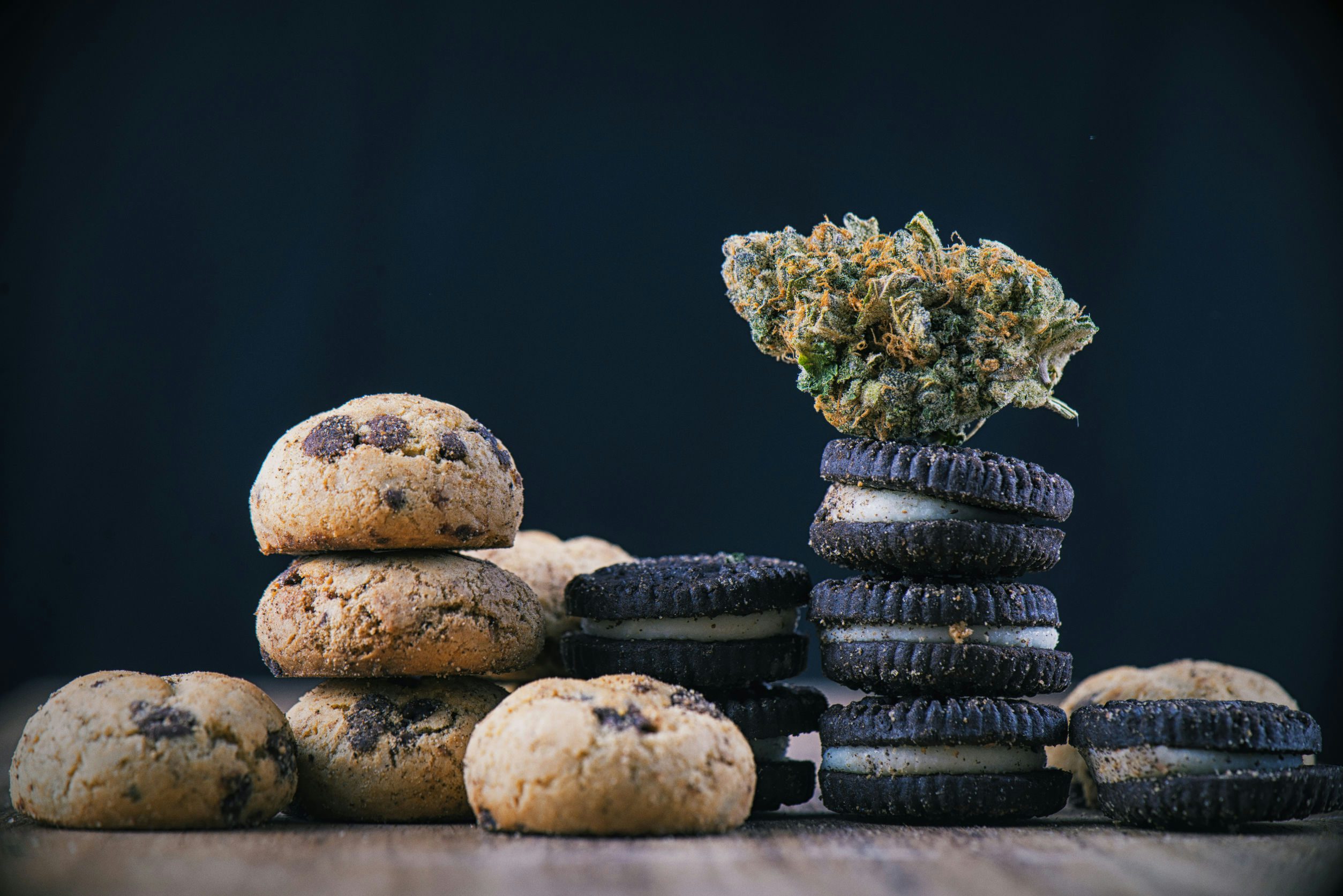There’s more to baking with cannabis than your standard pot brownies. If you fancy yourself a baker and want to add a little something extra to the mix, there are plenty of options available, ranging from scrumptious weed cookies to cannabis bread. It’s an amazing alternative for people who don’t necessarily want to smoke cannabis – and would much rather enjoy a nice snack with the same enjoyable effects.
Decarboxylation – a step before baking
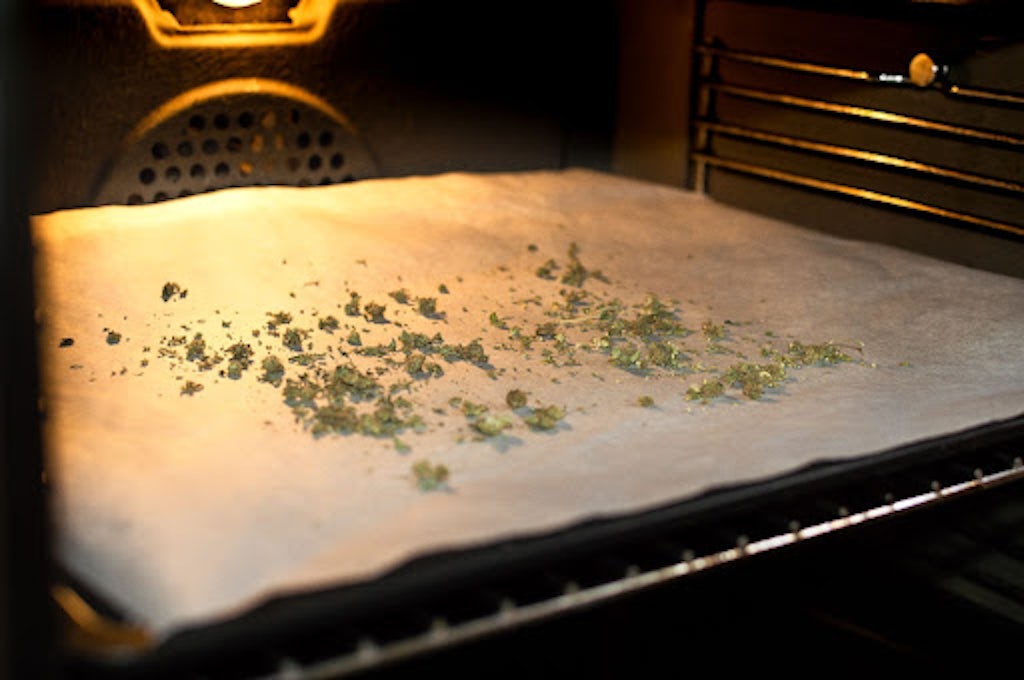
Decarboxylation is an important step before baking with weed, as ingesting raw cannabis will not produce the “high” effect. Raw cannabis must be prepared to activate the cannabinoids (THC and CBD) by extraction initiated via heating.
Heating will convert the non-active parent compounds THCA (tetrahydrocannabinolic acid) and CBDA (cannabidiolic acid) to THC and CBD, respectively. The extracted cannabinoids dissolve into an oily liquid, which can be used for baking.
Research shows the non-active parent compound THCA converts more quickly into THC compared to CBDA converting to CBD. Recent works have plotted decarboxylation rates at temperatures between 80°C (176°F) to 145°C (293°F) for up to 120 minutes. For optimal THC extraction, at temperatures above 100°C, almost all of the parent compound THCA was converted to THC in under 30 minutes. For CBD-rich strains, CBDA took longer to convert into CBD (>30 minutes). 1 2
The basics: cannabis oil and cannabutter
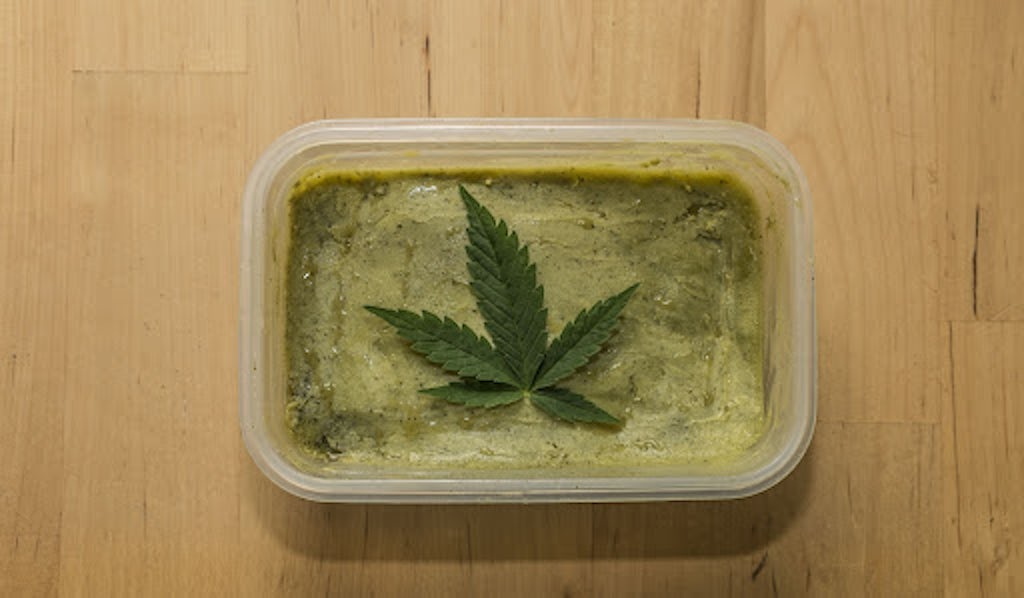
Baking usually requires butter or oil, and cannabinoids like THC and CBD are able to dissolve in fats. Both cannabutter and cannabis oil are relatively easy to make. Therefore, infusing them into butter and oil is a smart way to incorporate weed into a delicious edible.
How to make cannabis oil
Oil is a key ingredient in the kitchen, so storing cannabis-infused oil will come in handy for any type of cooking.
How to make cannabutter
Butter is a staple when it comes to baking, so infusing cannabis can be a perfect way to quickly whip up some tasty edibles. Note that it should be prepared slowly at a low temperature to avoid degradation and breakdown of the active THC/CBD.
Our 5 most popular baking with weed recipes
There are endless baked goods you can make with weed, you just have to choose what you’re in the mood for.
1. Brownies
Weed brownies are a popular choice when it comes to baking with marijuana – not only because they taste great, but they are also really easy to make.
Ingredients:
- 1 stick (4 ounces/113 grams) unsalted butter
- 1/4 cup (4 tbsp) cannabutter
- 12 ounces (340 grams) bittersweet chocolate, coarsely chopped
- 1 cup packed light brown sugar
- 3/4 cup granulated sugar
- 1 teaspoon fine sea salt
- 4 large eggs
- 2 teaspoons vanilla extract
- 3/4 cup all-purpose flour
Instructions:
- Preheat the oven to 350 degrees and grease a 9-by-13-inch baking pan.
- Melt butter and cannabutter, add chocolate and stir until melted
- Add brown sugar, granulated sugar, and salt, stir until combined and set aside to cool.
- Whisk eggs in a bowl until foamy and then whisk in the vanilla.
- Whisk chocolate mix into egg mix, making sure the chocolate isn’t too hot.
- Whisk in flour until combined.
- Pour batter into the pan and bake for 20 to 25 minutes.
- Remove from the oven, allow brownies to cool, pour a glass of milk, eat the corner piece, cancel all plans for the evening.
For the full weed brownies recipe, click here.
2. Space cake
Baking a cake — including one that will get you baked — is really easy and the end result will give you more satisfaction than buying a store-bought alternative.
Ingredients:
- 1 1/2 cups unsweetened cocoa powder, plus more for dusting
- 1 1/2 teaspoons salt
- 3 cups all-purpose flour
- 1 tablespoon baking soda
- 1/4 cup cannabis-infused vegetable oil
- ½ cup vegetable oil
- 1 1/2 cups buttermilk
- 3 cups sugar
- 1 1/2 teaspoons vanilla extract
- 1 1/2 teaspoons baking powder
- 3 large eggs, lightly beaten
- 1 1/2 cups hot water
Instructions:
- Preheat the oven to 350°F(175°C) and liberally grease two 8 inch cake pans with butter.
- Sift the cocoa, flour, baking soda, baking poser, salt, and sugar. Using a mixer set to low speed, beat in the oil, buttermilk, vanilla, eggs, and hot water.
- Pour the batter into the pans and bake for 45-55 minutes or until a toothpick inserted into the middle of the pans comes out clean.
- Remove the marijuana cakes from the oven and let them cool on wire racks.
- Use a frosting recipe of your choice to ice both of the cakes and stack them.
For the full space cake recipe, click here.
3. Weed cookies
Take your cookie experience to the next level and share the love with some weed cookies.
Ingredients:
- 2 1/4 cups all-purpose flour
- 1 teaspoon baking soda
- 1 teaspoon salt
- 1/2 cup CannaButter (8 tablespoons), softened
- 1/2 cup regular butter, softened
- 3/4 cup granulated sugar
- 3/4 cup packed brown sugar
- 1 teaspoon vanilla extract
- 2 large eggs
- 2 cups (12-oz. pkg.) TOLL HOUSE Semi-Sweet Chocolate Chips
Instructions:
- Preheat the oven to 375 degrees Fahrenheit
- Combine flour, baking soda, and salt in a small bowl.
- Beat butter, cannabutter, sugar, brown sugar, and vanilla extract in a large bowl until creamy. Add eggs one at a time, beating well after each egg.
- Gradually beat in flour mixture, stir in chocolate chips.
- Scoop out the batter in rounded tablespoons and drop onto ungreased baking sheets.
- Bake for 9 to 11 minutes or until golden brown. Remove from the oven and let cool.
For the full cannabis cookies recipe, click here.
4. Cannabis bread
Plain, boring toast for breakfast? A hint of weed in your bread will get you a nice sense of euphoria to start your day.
Ingredients:
- ½ cup warm water (110 degrees F/45 degrees C)
- 2 ¼ teaspoons active dry yeast
- 1 teaspoon white sugar
- 1 teaspoon salt
- 4 tablespoons cannabis-infused olive oil
- 2 ½ cups all-purpose flour
Instructions:
- Mix together the warm water, yeast, sugar, salt, and cannabis oil in a large bowl.
- Stir in two cups of the flour and make into a soft ball, kneading in additional flour to make the dough soft and not sticky.
- Place dough into a greased, medium-size bowl, cover and let rise until it has doubled in size.
- After the dough has doubled in size, punch it down and form it into a ball or loaf shape. Place it onto a greased cookie sheet and let it rise for 15 to 20 minutes.
- Bake at 375 degrees F (190 degrees C) for 30 to 40 minutes, until golden brown.
For the full cannabis bread recipe, click here.
5. Red velvet cupcakes
A delicious and easy way to finish off a meal, weed cupcakes will give you your daily dose of happiness.
Ingredients:
- 1 1/2 cups sugar
- 1/2 cup cannabis butter at room temperature*
- 2 large eggs, room temperature
- 2 1/3 cups cake flour
- 2 tablespoons Dutch-processed cocoa powder
- 1 teaspoon baking soda
- 1 teaspoon baking powder
- 1/2 teaspoon salt
- 1 cup buttermilk
- 1 1/2 tablespoons red food coloring
- 1 teaspoon vanilla extract
- 1 teaspoon distilled white vinegar
- *if you would like a less potent batch, you can use a ¼ cup of cannabis butter and a ¼ cup of regular butter
Instructions:
- Preheat the oven to 350°F (175°C) and line two muffin pans with cupcake papers.
- Using an electric mixer set to medium speed, beat the butter and sugar for about three minutes or until it becomes light and fluffy.
- Slowly add in the eggs one at a time and beat until fully incorporated.
- In a separate bowl, sift together the cake flour, cocoa powder, baking soda, baking powder, and salt.
- In a third bowl, whisk together the buttermilk, vinegar, vanilla extract, and red food coloring.
- Here’s where it might get tricky: Add 1/4 of the dry ingredients to the third bowl and mix, then add 1/3 of the wet mix. Continue mixing in a wet, dry, pattern, until the mix is just combined. Make sure not to overmix.
- Scoop the batter into the cupcake papers, filling to about ½ to ¾ full. It should make between 18-24 cupcakes.
- Bake for 18-22 minutes or until a toothpick inserted comes out clean. Make sure to rotate the pan after 15 minutes so it bakes evenly.
- Remove cupcakes from heat and allow them to cool on a wire rack.
- For the frosting, simply beat the butter and cream cheese together with the mixer. Add in the vanilla extract and make sure it’s well incorporated, then add the powdered sugar until it tastes just right to you.
- Once the cupcakes have fully cooled off, you can frost them with the icing however you see fit.
For the full cannabis cupcakes recipe, click here.
Common mistakes when baking with weed
Not decarboxylating
Raw cannabis has no active THC, so consuming edibles made with raw cannabis will not produce the desired effects. Decarboxylating is an easy and essential step to all cannabis edibles.
Carelessly preparing cannabis
Heating cannabis at very high temperatures will break down and degrade the active THC. Choose recipes that require minimal heating.
Adding too little or too much
Adding too little or too much cannabis-infused oil or cannabutter may have no effect or too much, respectively. Always start slow.
Not stirring after incorporating cannabis oil or cannabutter
Stirring will evenly distribute the active ingredient in your baking batter. It will also reduce the amount of cannabis taste in your final recipe.
Choosing poor quality bud
The better your cannabis, the more cannabinoids it will have, so choosing a quality flower is important to achieve the desired experience.
How edibles work
Edibles come in many different forms – including baked goods or candies. They are becoming more popular across the states where cannabis is legal for recreational and/or medicinal purposes. Fortunately, edibles seem to be safer, as they do not carry the same risks as cannabis smoking, making them an attractive alternative. Edibles also avoid smoking-related issues, such as odors and social stigmas, as they can be consumed discreetly. 3 4
The onset of effects after eating an edible varies, as it depends on the type of edible and who is consuming it. Compared to smoking weed, which directly introduces the cannabinoids to your lungs and then rapidly distributes them to the brain, edibles are ingested and therefore need to go through the digestive system in order to reach the bloodstream to exert their effects. Oral absorption of cannabinoids is slower than other delivery methods, with studies showing peak concentrations at approximately 1 to 3 hours after ingesting. 5 6 7
While edibles take longer to kick in compared to smoking or vaping, they can last much longer. Research shows that the ingestion of a THC-containing chocolate cookie exerted long-lasting and less-intoxicating effects than smoking. In an older study, participants with a history of cannabis use described these positive effects when given cannabis-infused brownies. The majority of the positive responses came on average after 3 hours of consuming the edibles, with effects dissipating within 24 hours. 8 9
More recent studies show that the duration of effects can last around 6 to 8 hours. Also, edibles have also been shown to enhance analgesic effects for people suffering from chronic pain conditions. 10
The onset and duration of the psychotropic effects of weed predominantly depend on the dosage (the amount of THC). The effective dose range is very wide and variable, as it depends on the person and their level of tolerance to edibles. For some, 2.5 mg is a sufficient dose, while others require higher doses. Therefore, a low dose is recommended for new users, which can be gradually increased up to a dose they find effective and favorable. This will encourage and promote the development of tolerance over time. An easy tip to remember is to “start low, go slow, and stay low”. 11
Sources
- Mei Wang, Yan-Hong Wang, Bharathi Avula, Mohamed M. Radwan, Amira S. Wanas, John van Antwerp, Jon F. Parcher, Mahmoud A. ElSohly, and Ikhlas A. Khan.Cannabis and Cannabinoid Research.Dec 2016.262-271.http://doi.org/10.1089/can.2016.0020
- https://www.scientificbulletin.upb.ro/rev_docs_arhiva/rez0e1_161311.pdf
- Murphy, F., Sales, P., Murphy, S., Averill, S., Lau, N., & Sato, S.-O. (2015). Baby Boomers and Cannabis Delivery Systems. Journal of Drug Issues, 45(3), 293–313. https://doi.org/10.1177/0022042615580991
- Barrus, D. G., Capogrossi, K. L., Cates, S. C., Gourdet, C. K., Peiper, N. C., Novak, S. P., Lefever, T. W., & Wiley, J. L. (2016). Tasty THC: Promises and Challenges of Cannabis Edibles. Methods report
- Grotenhermen, F. Pharmacokinetics and Pharmacodynamics of Cannabinoids. Clin Pharmacokinet 42, 327–360 (2003). https://doi.org/10.2165/00003088-200342040-00003
- B Law, P A Mason, A C Moffat, R I Gleadle, L J King, Forensic aspects of the metabolism and excretion of cannabinoids following oral ingestion of cannabis resin, Journal of Pharmacy and Pharmacology, Volume 36, Issue 5, May 1984, Pages 289–294, https://doi.org/10.1111/j.2042-7158.1984.tb04376.x
- Ohlsson, A., Lindgren, J.-E., Wahlen, A., Agurell, S., Hollister, L.E. and Gillespie, H.K. (1980), Plasma delta-9-tetrahydrocannabinol concentrations and clinical effects after oral and intravenous administration and smoking. Clinical Pharmacology & Therapeutics, 28: 409-416. https://doi.org/10.1038/clpt.1980.181
- HOLLISTER, L.E., GILLESPIE, H.K., OHLSSON, A., LINDGREN, J.-E., WAHLEN, A. and AGURELL, S. (1981), Do Plasma Concentrations of Δ9-Tetrahydrocannabinol Reflect the Degree of Intoxication?. The Journal of Clinical Pharmacology, 21: 171S-177S. https://doi.org/10.1002/j.1552-4604.1981.tb02593.x
- Edward J. Cone, Rolley E. Johnson, Buddha D. Paul, Leroy D. Mell, John Mitchell, Marijuana-Laced Brownies: Behavioral Effects, Physiologic Effects, and Urinalysis in Humans Following Ingestion, Journal of Analytical Toxicology, Volume 12, Issue 4, July-August 1988, Pages 169–175, https://doi.org/10.1093/jat/12.4.169
- Cooper, Z., Comer, S. & Haney, M. Comparison of the Analgesic Effects of Dronabinol and Smoked Marijuana in Daily Marijuana Smokers. Neuropsychopharmacol 38, 1984–1992 (2013). https://doi.org/10.1038/npp.2013.97
- Franjo Grotenhermen (2001) Harm Reduction Associated with Inhalation and Oral Administration of Cannabis and THC, Journal of Cannabis Therapeutics, 1:3-4, 133-152, DOI: 10.1300/J175v01n03_09
Sign up for bi-weekly updates, packed full of cannabis education, recipes, and tips. Your inbox will love it.

 Shop
Shop Support
Support
